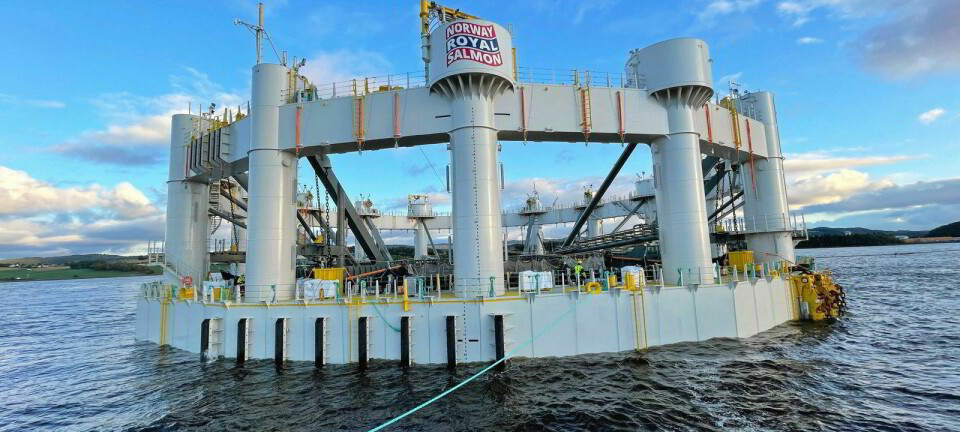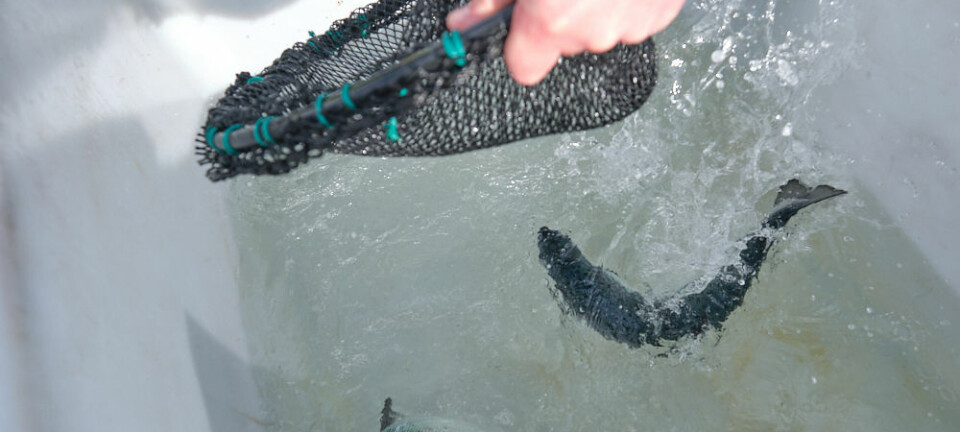
Grass protein in salmon feed a green breakthrough
Trials show potential for a sustainable home-grown novel ingredient
Staff at the Norwegian University of Life Sciences (NMBU) have been busy over the past week investigating the fish welfare and fillet quality of grass-fed salmon. An experienced, professional chef also participated in the assessment. The results are encouraging.
Grass, one of Norway's most accessible raw materials, can be an important contribution in making Norwegian farming more self-sufficient and sustainable.
“Grass is one of our most accessible and underutilised bioresources,” Sturle Skeidsvoll, head of research and development at Aller Aqua Norway, told Fish Farming Expert’s sister site Kyst.no.
Utilise resources
“Grass grows everywhere in Norway and, in fact, two out of three agricultural areas in Norway are only suitable for grass production. Therefore, it makes sense to look for new ways to utilise this resource.”S
It was precisely this desire to think in new ways that led to a collaboration with Professor Turid Mørkøre at NMBU, and together they took the initiative to test grass as a protein source in salmon feed. But grass is basically not adapted to fish – at least not yet.
“We are working with a raw material that has not been adapted for salmon, as was the case with soy in the nineties,” said Mørkøre.
“However, with research and proper processing, we believe that meadow crops in our local areas can be developed in a similar way, although we are aware that it will require both time and effort.”
Results from the research
The results show that incorporating grass protein into the feed does not inhibit growth and mortality is not affected either.
“We were particularly excited about the fillet colour, since meadow plants contain pigments that we were afraid could cause unwanted colour changes.,” said Mørkøre.
“However, the fillets had a nice colour and the incidence of gaping did not increase when grass protein was added to the feed.
Confirm the findings
“And the chef's blind test was encouraging – in fact, with a preference for the grass fish. Now we need to confirm the findings in large-scale trials, which we are planning for the autumn.”
Aller Aqua’s Skeidsvoll agrees that the recent results from the small-scale trials are promising, but there is still a lot of work to be done before final conclusions can be drawn.
“It will be exciting to see what the large-scale trials show. Only then will we know whether it is appropriate to include grass meal in future commercial feed mixtures.”
Why salmon trials with grass protein
Soy protein is currently the most widely used plant protein in salmon feed. At the same time, the government’s goal is that all feed for farmed fish and livestock should come from sustainable sources by 2034. For farmed fish, the goal is to increase the proportion of Norwegian-produced raw materials in the feed from eight to 25%. Here, grass can be part of the solution.
About the grass protein that was tested
The grass protein tested comes from lucerne (also known as alfalfa) – a legume that fixes nitrogen in the soil and therefore requires little or no fertiliser. This is a big advantage, especially since the soil in many agricultural areas is high in phosphorus after years of manure and intensive farming.
Phosphorus is a scarce resource globally, and by using what is already in the soil, the need for added fertiliser is reduced – which is both more economical and sustainable.
Alfalfa is also nutritious. The protein concentrate used in the trial consists of over 50 % protein, is non-GMO and contains natural substances such as carotenoids, chlorophyll, omega-3 fatty acids and vitamins. The green juice from the plant was dried and used in salmon feed, while the fibre-rich residue went to ruminants.
Bårde Mørkøre and Skeidsvoll believe this may be the breakthrough in using grass from Norwegian fields to one day provide nutrition for both fish in the water and livestock on the land.
























































